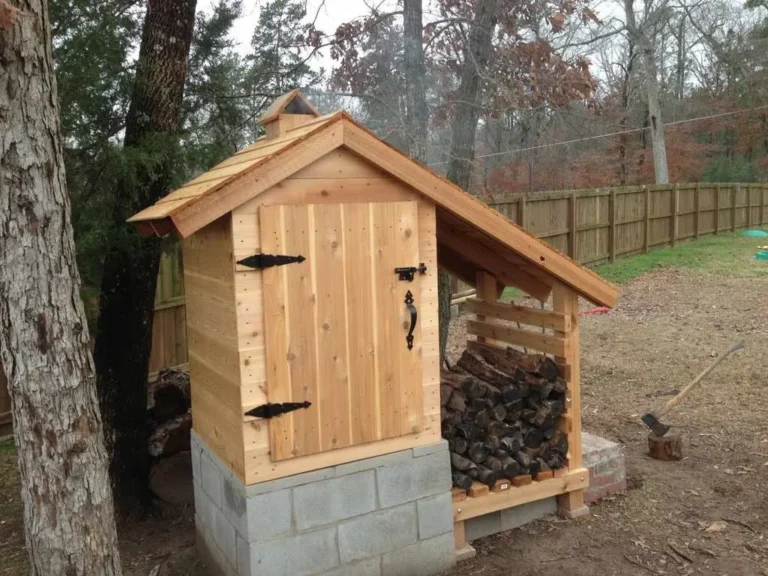When it comes to food preservation, a smokehouse is a time-tested, reliable method that brings incredible flavor and longevity to your meat and fish. Creating your own smokehouse is a fun, rewarding project that not only enhances self-reliance but also ensures you have tasty, preserved food at your fingertips.
Whether you’re a seasoned homesteader or a prepper looking to enhance your skillset, a smokehouse is a valuable addition to your preparedness toolbox.
Why Build Your Own Smokehouse?
Building a smokehouse lets you control the preservation process and the quality of the food you prepare. With grocery prices soaring and the unpredictability of food supply chains, having the ability to cure and smoke your own meat is a priceless skill. Plus, food smoked at home simply tastes better because you can tailor the process to your flavor preferences.
Smoked foods also store longer without refrigeration, which is especially helpful during power outages or when you’re off the grid. With a smokehouse, you can preserve surplus meat from hunting or fishing trips, ensuring that nothing goes to waste.
Choosing the Right Location for Your Smokehouse
Selecting a proper location is essential to building a successful smokehouse. Here are some key considerations:
- Safety First: Build it away from flammable structures to reduce fire hazards.
- Wind Direction: Position the smokehouse where smoke can ventilate naturally without affecting nearby buildings or gardens.
- Accessibility: Ensure it’s close enough to your kitchen or food prep area for convenience.
Essential Materials for Building a Smokehouse
A smokehouse can be as simple or sophisticated as you like. For beginners, starting with a basic design is an excellent way to learn. Here’s a quick materials list for a straightforward wooden smokehouse:
- Wood: Cedar or pine planks are great for durability.
- Nails and Screws: For a sturdy structure.
- Metal Grates or Hooks: For holding the meat or fish.
- Metal Chimney Pipe: To direct smoke and maintain proper airflow.
- Roofing Material: To protect your smokehouse from the elements.
Recycling materials like old wooden pallets or metal sheeting is also a great way to save money while being eco-friendly.
Building Your Smokehouse Step-by-Step
Step 1: Create a Solid Foundation
A strong base is essential for any smokehouse. Level the ground and pour a concrete slab or lay down heavy stone pavers to serve as your foundation. This will prevent rot and keep pests out.
Step 2: Build the Frame
Construct the frame using wooden planks, ensuring the structure is tall enough to accommodate hanging meat or fish. Aim for a height of about 6-8 feet.
Step 3: Add Walls and Doors
Attach planks to create the walls, leaving room for a door on one side. Make sure the door has a snug fit to minimize smoke loss.
Step 4: Install the Roof
Use a slanted or gable roof to allow smoke and moisture to escape. Add the chimney pipe here for better airflow.
Step 5: Add Racks or Hooks
Install grates or hooks inside the smokehouse where you’ll hang or place your food. Ensure they’re made of food-safe, heat-resistant materials.
Step 6: Create the Fire Pit
The fire pit is the heart of the smokehouse. Dig a small pit just outside the structure or use a separate metal box connected to the smokehouse via a pipe. This setup prevents direct heat exposure, allowing for slow smoking.
Smoking Basics: Hot vs. Cold Smoking
There are two main methods for smoking food: hot and cold smoking. Each has its unique benefits, and your choice depends on what you’re preserving.
Hot Smoking
Hot smoking cooks the meat while preserving it. This method is perfect for sausages, ribs, and poultry. Maintain temperatures between 225°F and 250°F.
Cold Smoking
Cold smoking cures food without cooking it, making it ideal for fish, bacon, and jerky. Keep the temperature below 90°F to prevent spoilage.
Best Woods for Smoking
The type of wood you use impacts the flavor of your smoked foods. Some popular options include:
- Hickory: Strong, bold flavor, ideal for pork.
- Applewood: Sweet, fruity flavor, great for poultry and fish.
- Oak: Versatile and mild, suitable for all meats.
- Mesquite: Strong and earthy, perfect for beef.
Always use untreated, natural wood for smoking. Avoid woods with resin, such as pine, as they can impart a bitter taste and be toxic.
Maintaining and Using Your Smokehouse
Proper maintenance ensures your smokehouse remains in top condition. Clean the grates and interior walls regularly to prevent residue buildup. Inspect the structure for wear, especially after harsh weather.
When smoking food, experiment with brines, rubs, and marinades to enhance the flavor. Always ensure your meat reaches the appropriate internal temperature for safety.
Why a Smokehouse is a Prepper’s Dream
For preppers, a smokehouse offers more than just delicious food—it’s a step towards self-sufficiency. It helps you reduce reliance on grocery stores, preserve large quantities of food, and enjoy rich flavors that are hard to replicate with store-bought products.
Wrapping Up
Building a smokehouse is more than a DIY project; it’s a gateway to a more independent and flavorful lifestyle. With the right materials, some elbow grease, and a little patience, you can create a smokehouse that serves your family for years. Get started today, and enjoy the satisfaction of mastering this timeless preservation technique.
Also see: Essential Meat Preservation Techniques Using Basic Means



